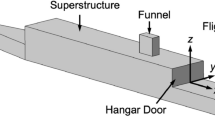Abstract
When aircraft flying at a high speed, the density and reflective index of atmosphere around it become uneven. Thus images or videos observed from the observation window on the aircraft are usually blur or quivering, which is called the aero-optical effect. To recover the images from poor quality, it is necessary to learn about the wavefront distortion of the light, described as optical path difference (OPD). Among the existing methods, the method of computational fluid dynamics (CFD) simulation followed by ray tracing is very time consuming, and the method of real-time OPD measurement with OPD sensor has a certain lag for OPD with high frequency. In this paper, a reconstructible dimension reduction method based on dictionary learning is employed to map the high-dimensional OPD data into a low-dimensional space, and the OPD data are calculated when rays travel across the supersonic shear layer. All the parameters of training and test datasets remain the same except the convective Mach numbers (Mc number). According to the dimension reduction results of training sets, we find that OPD is obviously periodic and its distribution characteristics have a strong correlation with Mc number. By fitting the OPD data in the low-dimensional space, every point on the fitting curve can be reconstructed to the original high-dimensional space, which works as prediction. Compared with the truthful data, the average similarity coefficient of the prediction for the test datasets is up to 83%, which means that the prediction result is credible.









Similar content being viewed by others
References
Gilbert KG, Otten LJ (1982) Aero-optical phenomena. AIAA, New York
Burns WR, Jumper EJ, Gordeyev S (2016) A robust modification of a predictive adaptive-optic control method for aero-optics. In: 47th AIAA plasmadynamics and lasers conference, p 3529
Whiteley M, Gibson J (2007) Adaptive laser compensation for aero-optics and atmospheric disturbances. In: 38th AIAA plasmadynamics and lasers conference in conjunction with the 16th international conference on MHD energy conversion, p 4012
Goorskey DJ, Schmidt JD, Whiteley MR (2013) Efficacy of predictive wavefront control for compensating aero-optical aberrations. Opt Eng 52(7):071418
Tesch J, Gibson S, Verhaegen M (2013) Receding-horizon adaptive control of aero-optical wavefronts. Opt Eng 52(7):071406
Page KA (2005) Applications of linear predictors in adaptive optics, p 1511
Doerr SE, Wissler JB, McMackin LJ, Truman CR (1993) Aero-optics research at the Phillips laboratory. Opt Diagn Fluid Thermal Flow Int Soc Opt Photon 2005:129–139
Hong HY, Zhang TX (2004) Investigation of restoration algorithm for degraded images caused by aero-optics effects using multi-resolution blind deconvolution. Chin J Comput Chin Edn 27(7):952–963
Cowley JM (1979) Principles of image formation. Introduction to analytical electron microscopy. Springer, Boston, pp 1–42
Hecht E, Zajac A (1987) Optics, 2nd edn. Addison-Wesley, Boston
Klimaszewski K, Sederberg TW (1997) Faster ray tracing using adaptive grids. IEEE Comput Graph Appl 17(1):42–51
Wu L, Fang J, Yang Z, Wu S (2011) Study on a neural network model for high speed turbulent boundary layer inducing optical distortions. Optik Int J Light Electron Opt 122(17):1572–1575
Van Der Maaten L, Postma E, Van Den Herik J (2009) Dimensionality reduction: a comparative. J Mach Learn Res 10:66–71
Wei X, Kleinsteuber M, Shen H (2015) Invertible nonlinear dimensionality reduction via joint dictionary learning. In: International conference on latent variable analysis and signal separation. Springer, Cham, pp 279–286
Donoho DL (2006) Compressed sensing. IEEE Trans Inf Theory 52(4):1289–1306
Jumper EJ, Fitzgerald EJ (2001) Recent advances in aero-optics. Prog Aerosp Sci 37(3):299–339
Gladstone JH, Dale TP (1863) XIV. Researches on the refraction, dispersion, and sensitiveness of liquids. Philos Trans R Soc Lond 153:317–343
Zheng SL, LI YX, Wei X, Peng XS (2016) Nonlinear dimensionality reduction based on dictionary learning. Acta Autom Sin 42(7):1065–1076
Acknowledgements
This work is supported in part by The Technical Innovation Project of Aerospace Advanced Technology Joint Research Center (Project No: USCAST2016-6).
Author information
Authors and Affiliations
Corresponding author
Rights and permissions
About this article
Cite this article
Li, Z., Li, Y., Xing, B. et al. OPD analysis and prediction in aero-optics based on dictionary learning. AS 2, 61–70 (2019). https://doi.org/10.1007/s42401-018-0020-1
Received:
Revised:
Accepted:
Published:
Issue Date:
DOI: https://doi.org/10.1007/s42401-018-0020-1




